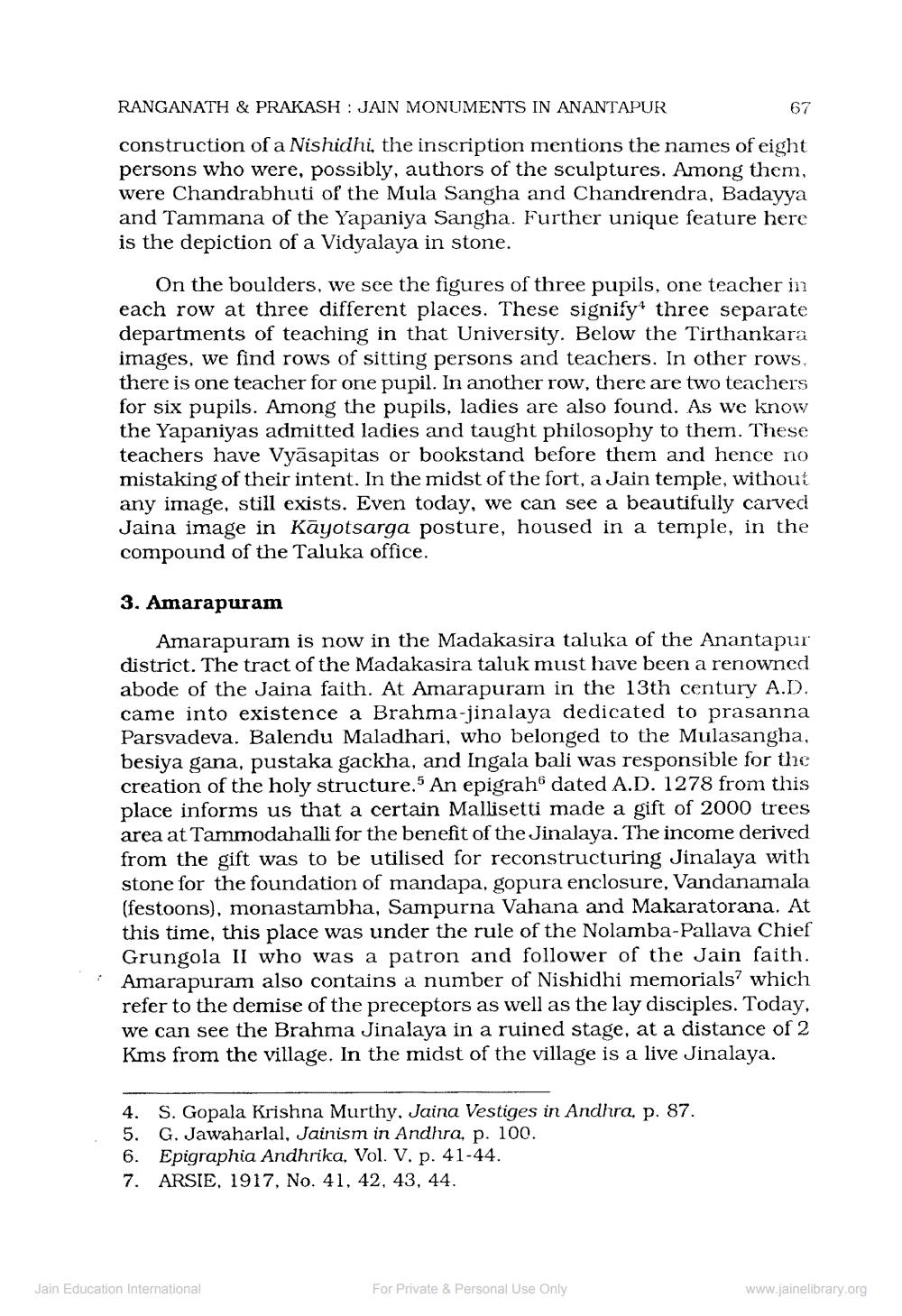Book Title: Jain Journal 1998 01 Author(s): Jain Bhawan Publication Publisher: Jain Bhawan Publication View full book textPage 8
________________ RANGANATH & PRAKASH JAIN MONUMENTS IN ANANTAPUR construction of a Nishidhi, the inscription mentions the names of eight persons who were, possibly, authors of the sculptures. Among them, were Chandrabhuti of the Mula Sangha and Chandrendra, Badayya and Tammana of the Yapaniya Sangha. Further unique feature here is the depiction of a Vidyalaya in stone. On the boulders, we see the figures of three pupils, one teacher in each row at three different places. These signify three separate departments of teaching in that University. Below the Tirthankara images, we find rows of sitting persons and teachers. In other rows. there is one teacher for one pupil. In another row, there are two teachers for six pupils. Among the pupils, ladies are also found. As we know the Yapaniyas admitted ladies and taught philosophy to them. These teachers have Vyasapitas or bookstand before them and hence no mistaking of their intent. In the midst of the fort, a Jain temple, without any image, still exists. Even today, we can see a beautifully carved Jaina image in Kayotsarga posture, housed in a temple, in the compound of the Taluka office. 3. Amarapuram Amarapuram is now in the Madakasira taluka of the Anantapur district. The tract of the Madakasira taluk must have been a renowned abode of the Jaina faith. At Amarapuram in the 13th century A.D. came into existence a Brahma-jinalaya dedicated to prasanna Parsvadeva. Balendu Maladhari, who belonged to the Mulasangha, besiya gana, pustaka gackha, and Ingala bali was responsible for the creation of the holy structure.5 An epigrah dated A.D. 1278 from this place informs us that a certain Mallisetti made a gift of 2000 trees area at Tammodahalli for the benefit of the Jinalaya. The income derived from the gift was to be utilised for reconstructuring Jinalaya with stone for the foundation of mandapa, gopura enclosure, Vandanamala (festoons), monastambha, Sampurna Vahana and Makaratorana. At this time, this place was under the rule of the Nolamba-Pallava Chief Grungola II who was a patron and follower of the Jain faith. Amarapuram also contains a number of Nishidhi memorials' which refer to the demise of the preceptors as well as the lay disciples. Today, we can see the Brahma Jinalaya in a ruined stage, at a distance of 2 Kms from the village. In the midst of the village is a live Jinalaya. 4. S. Gopala Krishna Murthy. Jaina Vestiges in Andhra, p. 87. 5. G. Jawaharlal, Jainism in Andhra, p. 100. 6. Epigraphia Andhrika, Vol. V. p. 41-44. 7. ARSIE, 1917, No. 41, 42, 43, 44. 67 Jain Education International For Private & Personal Use Only www.jainelibrary.orgPage Navigation
1 ... 6 7 8 9 10 11 12 13 14 15 16 17 18 19 20 21 22 23 24 25 26 27 28 29 30 31 32 33 34 35 36 37 38 39 40 41 42
